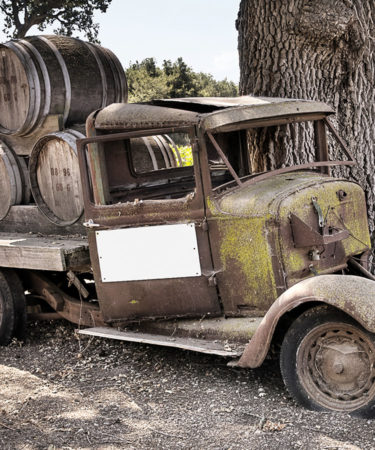One of the reasons we love to study the story behind the wine in our glass is because it typically brings together an incredible cast of characters, political agendas, environmental circumstances, and historically significant moments. When aged together, we find the perfect balance of intriguing history and desire to drink a glass of wine. And the story behind America’s oldest native grape, Norton, is no exception.
Norton’s origins go back to one of America’s founding fathers and his attempt to find a grape that could produce a wine similar to the libations produced in the Old World. As you probably know by now, Thomas Jefferson put a lot of effort behind cultivating a wine culture in the new land, but Jefferson was not alone in his pursuits. While Jefferson was never able to fully see the fruits of his efforts, and the emergence of a booming Virginia wine industry that included the cultivation of native US grapes, in the final years of Jefferson’s life a man by the name of Dr. Daniel Norton was experimenting with crossbreeding in his Richmond, VA lab and while working with the Norton vine discovered that it was well suited for growth in Virginia soil. A US wine grape had been discovered!
But what possessed a man to attempt hundreds of crossbreeds in order to discover a grape that could produce wine in this new world? Contemplating suicide due to to the loss of his wife and newborn child, Dr. Norton buried himself in his work, desperate to find relief from his grief. As Norton experimented with his crossbreeds in the Virginia soil, he became obsessed with creating a vine that could live. As he continued his experiments, one vine began to show potential in its ability to survive, and low and behold, the discovery of what is now called the Norton grape gave Dr. Norton new reason to live, thus literally saving his life. What Dr. Norton had discovered was a native grape that had the ability to create wines similar in flavor and aroma to its European cousins; the next step was getting that wine made.
After his discovery of the native American grape that would take his name, Dr. Norton made the grape commercially available for purchase, and in 1830 the vines found a home in Missouri, which at the time was the closest thing America had to a Napa Valley. Missouri would become the wine capital of the new country, and Norton the signature grape. The German settlers who founded the Missouri wine region loved how the Norton grape could survive in the harsh and cold conditions of the region, unlike the French vines that died easily, and how it was virtually impervious to diseases.
Shortly after arriving in Missouri, Norton hit what would become its heyday. The wine made from the grape spread across the US, and even found fans in Europe. In 1873, Norton wine won the gold medal in the international exhibition in Vienna. Things were really looking up, and it seemed for a time that Norton would spread like wildfire, becoming the dominant grape in the entire country, and then Prohibition hit.
With the onset of Prohibition, Norton and other wine grapes such as Cabernet and Merlot were pulled up across the country, with the sweet Concord grape planted in their place. Grapes used for primarily making wine had no place in the booze-free US, and with no one else growing Norton around the world, it fell into obscurity. When Prohibition finally ended in 1933, the wine that had been drunk in secret during that time all came from other parts of the world — locations that had never used the Norton grape — so when America began to rebuild its wine regions, they looked to the wines they drank during Prohibition as their inspiration, and that did not include Norton.
For 56 years following the end of Prohibition the Norton grape was rarely planted and few remembered the wine it used to create. Then in 1989, Dennis Horton purchased a small plot of land in Virginia and set up a vineyard, determined to return Norton to its rightful place as a noble American grape, capable of producing fantastic wines. Since then Norton has slowly begun to be cultivated again in its birthplace of Virginia as well as the state of Missouri which made it famous all those years ago. Who knows what the wine world has in store for Norton, as tastes and preferences continue to evolve, but the real lesson here is that like any good American, the Norton grape never gives up.
